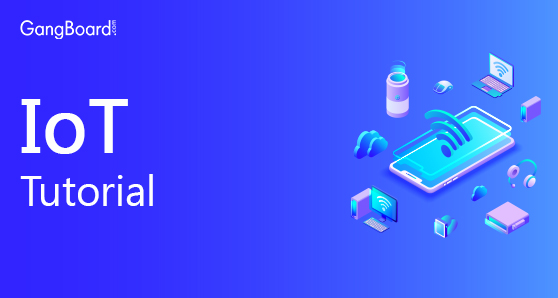
IoT Tutorial
IoT Tutorial for Beginners
What is IOT?
Internet of things as we can understand from the name itself i.e. Internet + Things. Now, first of all, we have things i.e. all and every gadget, devices, and appliances that we use in our houses and office, etc.
Second is the internet which is the vast network of computers around the globe where we can share information and controls etc.
When we interface things with the internet it is called the Internet of Things. For example – we have each and every appliance in our home like a fridge, TV, Washing machine, microwave, etc. Presently in most places, it is operated manually as the person who operates has to be present beside the machine.
Today we know that it’s a fast-moving world so everyone has a scarcity of time so in order to save time, we take the help of IOT technology.
Now before we how its implemented, we need to need to understand how IOT works.
There are 3 basic Components:
- Input
- Processing
- Output
For Example:
let’s take an example of Home automation
Here, let’s take the example of a House.
Firstly, when it is not equipped with IOT and secondly when it is equipped with IOT.
Firstly, in a house we a fan, a TV, A fridge and a washing machine.
Now, let’s take a simple situation when your family goes out for vacation and mistakenly the machine was left switched on so in that case without IoT we had no option and this could also result in the damage of the appliance
But in the second case, with the help of IoT, the TV can be controlled with the help of your mobile or computers and it can be switched ON or OFF at any time and from anywhere.
IoT Tutorial For Beginners | GangBoard
1. IoT – Hardware
IoT Stands for the Internet of thing nowadays IoT is everywhere from your home appliances to car small devices, agriculture, wearable electronics its make human life more easy so IoT has great future and a great market according to analysts.
IoT has two parts basically Hardware and software and it is connected to the internet
Hardware:
Which content various hardware component like senor, actuator, Analog to Digital Conversion, Digital to Analog Conversion, Input-output interfaces, accelerometers, gyroscopes, pressure sensors, humidity sensors, LDR, proximity sensor, motion sensor, GPS and many more Various ports to communicate like MQTT, Zigbee, Bluetooth, wife and many more.
Mostly used the board for IoT RND raspberry pi, banana pi, andiron Uno and many more.
Software :
In which we use various programing language to write our business logic and to operate the device
Programing language wildly uses for embedded programming python which has a vast predefine library which we can easily use for our needs other the python there is C, C++. And many more.
We have to write the business logic for our IoT device and to control that device remotely we have to use any cloud platform like AWS IoT, Azure IoT, or through our one server.
Challenges for IoT:
There various challenges for IoT one of them is Security. Because IoT devices are the small and low end to giving theme security is one of the biggest challenges in IoT for that we can use block chai with IoT.
IoT is a vast field it contents so many more things.
2. IoT – Software
IoT consists of two parts one is software and the other is embedded devices, which sends/receives data.
Embedded side firmware is written to achieve a connection to servers hosted on cloud most of the time and read the sensor data, construct payload based on API’s of the platform and then send it. Many things are not implemented due to memory, speed and bandwidth constraints
From the software side, the software architecture should be properly designed and mostly consists of layered architecture namely the device layer, network layer, and the application layer.
The software architecture should support the following things namely
Data Collection
The data collected from a sensor device is pushed to an IoT platform. After receiving the data platform and should be able to do light processing on data. Sometimes devices send data to an IoT Edge where data collection is done locally and pushed to platform periodically. Therefore, the data collection layer has prime importance in building the entire application.
Device integration
The embedded device is a physical entity and the logical entity is created in a platform that is popularly knowns as device provisioning. The data sent from physical devices have to be uniquely identified as a logical entity in the platform. Physical devices are uniquely identified username, passwords, Access tokens, and certificates, which identifies the physical devices logically.
Real-time analytics
Data streaming to the platform is analyzed on the go, applying rules defined. With the real-time analytic engines, the convention method of querying the database to check the value is ruled out because of latency offered in IoT. So real-time monitoring of streams is done in parallel.
Application
The application layer plays an important role in IoT from a business perspective.
The platform might have collected all data sent by the device. Depending on the business use-case, the data representation is done. For example, GPS device sends a lot of information regarding location and identity, for school bus the application requires speed of the vehicle as prime factor and same GPS data for fleet monitoring speed of the vehicle may not be the prime factor. Thus, based on the use-cases dashboards are to be developed for better visualization.
3. IoT – Technology and Protocols
IoT stands for the Internet of things, which is one among trending technology in today’s tech market. IoT may sound very new, but it has very deep roots in wireless sensor networks. WSN is a wireless sensor network where the nodes or motes (WSN) are equipped with the controller with sensors and a wireless interface on top of it. The coordinator locally collects the sensor data for each node for further processing of data. IoT is just empowering these wired or wireless nodes with I i.e., internet. Due to advancements in internet and cloud technologies, IoT also picked up the pace swiftly. IoT platforms are cloud-based servers, which run 24×7 against applications that run on-premises locally. Server-based solutions, which is run locally, will have to maintain by human resource and scaling will be an issue. These issues are resolved easily in a cloud-hosted solution and the user can pay as per usage. IoT with the cloud-based solution will be a part of the server side. The client side can be from a tiny microcontroller to computers.
The data expected in IoT are strings or strings like JSON and with the maximum rate of transfer. ie., 1000 messages per second. To handle this type of data type, IoT uses dedicated lightweight protocols like MQTT, CoAP, and HTTP depending on use cases. The study says with the advent of IoT protocol MQTT (Message queuing telemetry transport) 70% of data is collected as against to 20% before MQTT. MQTT is an application layer; publish/subscribe architecture-based protocol built on top of Transport control protocol (TCP). MQTT has three quality of services in addition to TCP, which is a connection-oriented and reliable transport control protocol. The broker is the heart of the architecture, which facilitates the exchange of information between publishers and subscribers. Publishers are data generators, subscribers are data consumers, and they connected via the broker. Publishers and subscribers are just clients to the broker. A broker is responsible for the authentication of the client and maintains the subscription list of topics.
MQTT protocol is comparable to YouTube. YouTube has many channels and the user is be subscribed to channel their interest. If an upload is done on the subscribed channel, the entire subscribers get the alert. Therefore, users get the alert for only channels for which they have subscribed for and not for other channels as YouTube is running many channels.
Another example is Facebook post; any post done by the user will act as publisher and friends on user acts as subscribers. When a Facebook post posted all the friends of the particular account gets the post.
A popular broker is Mosquito and the popular tool for MQTT is MQTT.fx.
CoAP (Constrained Application Protocol) is a document transfer protocol like HTTP based on UDP. CoAP is a protocol that can work with REST and HTTP. CoAP also has similar methods of HTTP are GET, POST, PUT and DELETE. It is very lightweight compared to HTTP and MQTT.
Even though CoAP is based on UDP, which is connectionless and unreliable, CoAP, which is an application layer protocol, has two quality of services like CON and NON. CON stands for confirmable requests where ACK acknowledgment packets are being exchanged for each request. And NON stands for non-confirmable messages where ACK is not exchanged and still the requests are registered based on tokens. A popular tool for COAP is Copper in firefox
Similar to CoAP, HTTP is a web transfer protocol which is heaviest among the above said IoT protocols. Suited for data transfer for machines have considerable computing power. Typically meant for web servers and clients. HTTP also supports GET, POST, PUT and DELETE methods and the popular tools for realizing HTTP is the postman. It has a good architecture in terms of data transfer.
Any IoT platform uses all these above-said protocols for its data collection mechanism.
4. IoT – Common uses
IoT technology as per Gartner Hype curve is at the peak of its hype curve. Any technology undergoes this hype curve and becomes a fabric of human life like how plastics has become integral part of human being. As per the studies 20 billion devices is expected to be connected to IoT platform by the year 2020, which will be more than human population on the planet earth.
As more devices are connected to, an IoT platform more the intelligence can be derived from this data collected. This collected data from various sources become inputs to machine learning algorithms further predicting the behavior of the device.
Sensors enabled with IoT has common use cases in smart homes, automobiles, agriculture, Manufacturing industries and health sectors.
The most common uses case with respect to smart home is not only controlling the electrical appliances remotely but use cases can be refrigerators ordering vegetables, fruits and milk based on the daily usage behavior of the user and predicting stock for couple of days. Refrigerator with user permission will be ordering the commodities from common e shopping websites like big basket, flipkart and amazon choosing the best price. With this use case, multi-domain platforms are integrated at a common place called IoT platform to make things possible. The bank account information and its api’s is connected to e shopping sites of user and the intelligence of refrigerator is connected to arrive at this solution called smart refrigerators.
Imagine a refrigerator texting the stock required when are leaving from office to home based on the GPS location and turning on the alerts on the phone is possible because of IoT platform integrating GPS location (searching stationary shops nearby) and intelligence of the phone and refrigerator.
In the use case of automobiles car has multiple sensors in place to monitor the health status of the engine and other crucial parameters of the car . With these sensor data collection intelligent system can be setup in a place where car sends diagnostic reports to server and server requests car to undergo maintenance before it breaks.
Now we know that Tesla cars are capable of ordering its components before actually the car breaks. Is predictive maintenance technically.
Agriculture use case is very interesting based on the weather forecast study watering of plants is controlled. Example if forecast says it is going to rain 90% in another two days the intelligent system will ensure minimum amount of water will be used for irrigation couple of couple of days before rain saving water. Based on the weather forecast a right mixture of pesticide to prevent crop damage and time to harvest crop can be selected ensuring maximum yield and maximizing profits
Now the health care, because of smart bands the crucial health parameters is periodically measured. The variation of parameters is monitored for timely intervention, which can be automated with help of family physician.
This is how IoT will waived in the lives of common man in possible ways. Common man with mobile phone is already connected to IoT with dozens of sensors on phone. Now not only human beings animals (smart dairy), machines generate data ranging from bytes to GB’s with help of IoT.
5. IoT – Media and Advertisement
IoT has good number of uses cases in e-commerce and digital marketing. It already being waived in our daily life. Marketing strategies instead of being targeted to broader customers will be now narrowed down and target individual customer based on the historical data and using machine learning concepts to advertise the commodity, which is likely to be brought by customer.
Improving customer deep insights in terms of providing deep information of the goods in terms of shipping and its manufacturing process, creating value addition to product. Common example is googles navigation tool when a customer visits a new place based on his experience, customer gives reviews, which helps in building brand value and helping new customers.
Another classical example is some advertisement pages uses GPS location to advertise the location specific advertisement helping to find restaurants and other important things, which are location based. Connected cars with IoT as an interface predicting the likely hood of failure of car parts based on device end life signature and ordering the parts for spare improves customer experience and bringing break down drastically. Improve marketing and brand value of car.
Usage of IoT sensors and devices in hotel business has added new value tobusiness and improving customer experience. IoT not only helps in expanding business, but also helping venturing out to different verticals. Data collected by IoT helps in focusing to genuine user based on their activity and buying history. This will helps in retaining genuine customers and focusing more on their needs compared to others.
In summary, IoT has changed the way the business uses cases are taken up and developing solution which has very less development cost and less time to market. As we already know, the new generation oil is data and it is no more crude oil. This trending shift is due to humongous data collection from IoT technology.
6. IoT – Environmental Monitoring
There are 4 type of applications on IoT Environmental Monitoring, These are beneficial for nature.Waste
- Waste Management
- Vehicle Tracking
- Air and Water Pollution
- Extreme Weather
IoT Environmental Monitoring Use Case | GangBoard
Waste Management
The issue of waste administration is exceptionally critical issue in enormous urban areas, because of two reasons; first the expense of administration and second the issue of capacity of aggregating trash. So as to spare and utilize modest ecological favorable circumstances, a more profound infiltration of data and correspondences advancements arrangements in this field will be required. For instance, wise waste compartments help recognize the dimension of burden the trucks convey and take into account a streamlining of the gatherer trucks course, which thus can decrease the expense of waste accumulation and improve the nature of reusing. To join and utilize such save squander the executive’s benefits, the IoT will associate these shrewd waste compartments, to a control focus where an improvement programming will process the information and decide the ideal administration and course the authority truck ought to pursue.
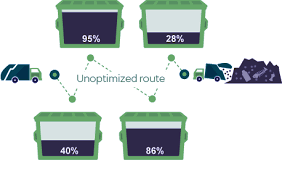
Vehicle Tracking
![]()
The vehicle following office utilizes street sensors and clever presentation frameworks that help drivers to locate the best way for leaving in the city. The advantages from this administration are numerous, for example, quicker the vehicle takes to find a leaving space implies lesser CO emanation from the vehicle, lesser traffic issues, and at last more joyful natives. The IoT framework can straightforwardly incorporate the vehicle leaving office. Besides, similar to we examined before, by utilizing correspondence innovations,
for example, Near Field Communication (NFC) or Radio Frequency Identifiers (RFID), we can comprehend the electronic affirmation arrangement of stopping and find spaces held for occupants or impaired people, in this way offering a superior administration to inhabitants that can utilize those openings and furthermore as a proficient device to detect any infringement rapidly.
![]()
Air and Water Pollution
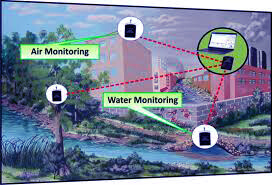
The checking innovation as of now being used for air and water security principally utilizes physical work alongside some propelled instruments, and lab handling systems. Through IoT frameworks, the requirement for physical work is decreased. Thus, visit examining is permitted, expanding the scope of checking and inspecting, permitting advanced nearby testing, and giving reactions to identification frameworks. This anticipates any further defilement of water bodies and other common assets and related catastrophes.
Extreme Weather
Incredible, propelled frameworks as of now utilized for climate estimating permit profound observing, however they experience the ill effects of utilizing expansive instruments, for example, radar and satellites. These instruments that are utilized for little subtleties come up short on the exact focusing on potential for keen innovation.
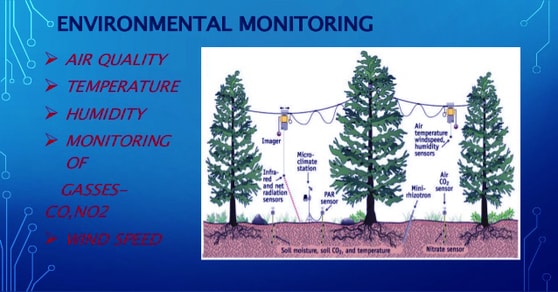
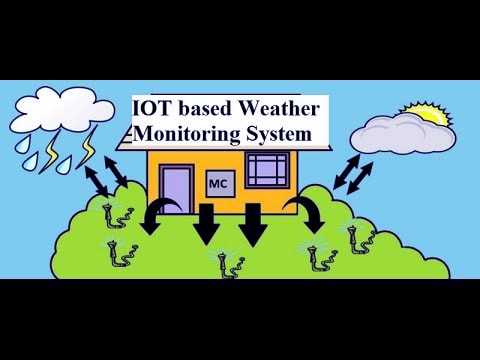
Presently, through the new IoT propels, the IoT framework guarantees more information that fine-grain, better adaptability, and exactness. Powerful climate determining methodology require high detail just as adaptability in instrument type, range, and organization. This outcomes in early reactions to anticipate death toll and property through early discovery.
IoT Applications | Top 10 Uses of Internet of Things | GangBoard
7. IoT – Manufacturing Applications
Leading manufacturers are using loT devices to improve the efficiency and productivity
of manufacturing operations.Here are some examples of possible loT use in different
business processes:
Logistics and Supply Chain Optimization
Access real-time supply chain data for improved insightsand decisions.
Material,equipment,and product tracking throughoutmarufacturing processes speeds operations.
Remote monitoring and predictive analysis preventmaterial waste.

Production flow monitoring
Monitor production lines starting from the refining process down to the packaging.
Real-time adjustmenits in operations for bettermaragemnent of operational cost.
loT can eliminate unnecessary work in progress inventory.
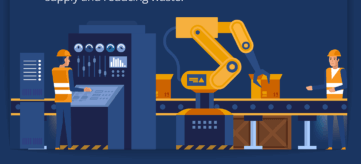
Inventory management
Irmmediate real-tirne notification if an item ls missing or running out of stock.
Precise estimates help plant managers plan accordingly.
Cross-channel visibility into inventories,optimizingsupply and reducing waste.
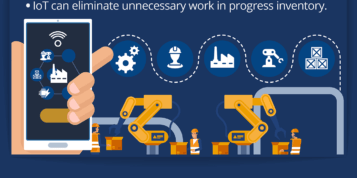
Security and Safety
Big data insights gathered over tirne help improve overall safety and security.
Track incidents such as injuries and near-miss situations in order to prevent them.
Reai-time notifications if there are deviations from standard manufacturing processes.
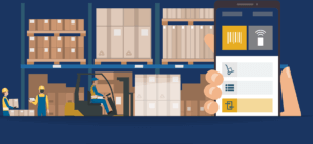
Applying loT to your manufacturing processes and operations can lead to a significant increase in productivity and save time and resources.
8. IoT – Energy Applications
IoT offers a wide combination of observing and energy control work with application identifying with business and private energy use contraptions and the energy source. The streamlining offered by IoT originates from a point by point examination that is commonly out of reach to most relations and open. There 3 kinds of IOT energy applications
- Reliability
- Commercial Energy
- Residential Energy
Reliability
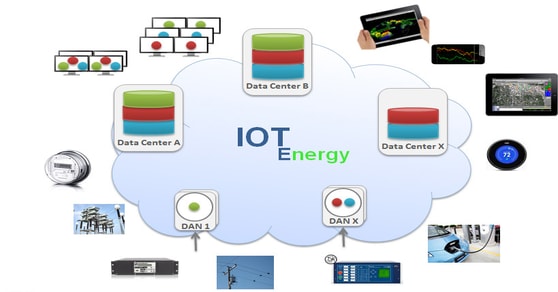
The IoT system through its noteworthy bits of knowledge and investigation guarantees system unwavering quality. Other than powerful use, IoT furthermore shields a system from getting throttled or over-burden. The system is secured against misfortunes, for example, harmed hardware, personal time, and wounds by recognizing dangers to system execution and dependability.
Commercial Energy
The colossal energy needs of little associations prompting more energy wastage can without much of a stretch contact organizations in a most significant manner. Littler associations convey an item with littler edges and grapple with correlative expenses of business while working with a predetermined number of assets and innovation. Greater affiliations have the obligation to screen a tremendous complex condition of energy utilize that offer couple of suitable and straight forward responses for energy utilizes the board.
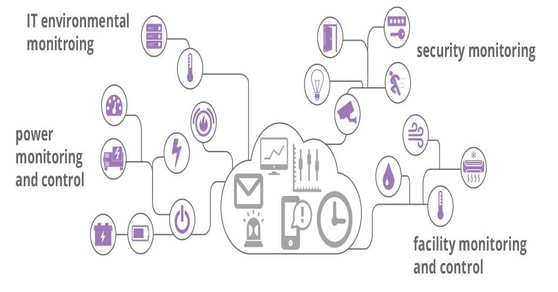
IoT while keep up a minimal effort and abnormal state of accuracy rearrange the procedure of energy observing and the executives. All purposes of an association’s consumption crosswise over gadgets are deliberately tended to. Associations are given a solid methods for dealing with their utilization by cost sparing and yield streamlining through the IoT system’s profundity of examination and control. IoT systems take care with energy issues likewise they treat valuable issues in a business compose that is mind complex and give answers for the proportional.
Residential Energy
The flood in energy expenses is a demonstration of ascending in innovation. Buyers are constantly searching for ways to deal with control or decline abuse. IoT offers refined approaches to examine and improve utilize not just all through the whole arrangement of the house yet additionally at a specific gadget level. This can go from extremely fundamental capacities, for example, darkening of lights, or be turning them off or altering numerous home settings or changing gadget settings to enhance energy use.
IoT additionally can possibly find utilizations that are hazardous and that emerge from issues like harmed machines, more established apparatuses or broken system segment.
9. IoT – HealthCare Applications
One of the applications on IoT can be in field of health care. Health care is one of the crucial & quiet important field, the response of the IoT devices need to be in be real time otherwise it can cost a lot. Introduction of IoT technology adds a lot to the health care sector.
IOT – Healthcare Applications | GangBoard
Reserach
As IoT is all about collecting the user details, this can help to boost the research in Health care. The vital data can lead to find solution to the various diseases or even can give us the way to find a better cure for the particular condition. Medical Researchers can run analytics on real time data & can gain clarity about a specific condition. This huge data is & will accelerate the pace of the research in healthcare sector.
Devices
Devices in health care need to be precise & accurate and they are quiet accurate. But IoT is adding an extra layer through which we can receive data anywhere around the world. The specialist Dr who is far away from the patient can have a real time look on to the patient & can have access to patient data and can give his expert advice to the Dr carrying out the procedure.
Many of the devices used in healthcare sector can be IoT enabled & through these devices we can collect the crucial data & which will be useful for the research development of the healthcare sector.
Medical Information Distribution
There are wearable devices available which the end users can buy or the products can be developed which will monitor the patient data. The Dr or the caretaker of the person has the access live data & will monitor the person. As per data the Doctor can decide if the required person needs attention or he is fine by himself.
For example measuring the heartbeat, blood pressure & many other critical medical parameters, the Dr will have a clear idea about person’s health.
Emergency Care
All the collected data from the person, analytics can be carried on the data. If something is abnormal, analytics can raise a notification to the assigned Dr, closed one & the required person will get immediate attention. Even the IoT device can book the ambulance on his behalf.
10. IoT – Building / Housing Applications
IOT – Building / Housing Application | GangBoard
Home Automation
Home automation is one of widely spread IoT usage in IoT world. Home automation not only means automating your appliance but also giving the user the feedback & also pushing end user notifications, suggesting user on usage of electricity & many more.
This data can be useful for the end user as the user will get suggestion & service provider can carry out the analytics on the received data & can go on sell the same data to the electronic manufacturing company and also to the Electricity Board.
One of the application of Smart Home is Smart Switch. Smart switch is nothing but a switch which can control the appliance or a button connected to the appliance but the difference is you can control it using IoT i.e anywhere around the world.
Smart Switch
Basically in this applications what I’m going to do is turn on the appliance i.e in this case is LED we can replicate it to turn on even a 230V bulb or anything of your wish.
Basically for this tutorial I’m using ESP8266. Speaking of ESP8266 it is one of the widely used Wifi enabled microcontroller reason being it is cheap & easily available.
On this Esp8266 we can Code it via C,LUA, Micro python etc. The IDE or environment for coding can be Arduino IDE, ESPlorer or we can even installing Mongoose OS on to it.
For this tutorial I’m using Arduino IDE (C programming) & for communication I’m using MQTT(Message Queue Telemetry Transport) protocol. Smart Switch act as the receiver in this application & we are sending on/off signals.
For MQTT broker here I’m using AWS EC2 instance, on EC2 instance I have installed Mosquitto Boker.The led is connected to NodeMCU(ESP8266) & to send the turn ON/OFF message to the NodeMCU I’m using MQTT Dashboard Application. The Switch is configured on the app to turn ON/OFF led on the device.
11. IoT – Transportation Applications
IoT in Transportation can be huge sector & it can grow in this sector. Transportation is the field that is being untouched & kept away from IoT. Connected cars and fleet management are one of the common examples in transportation application.
IOT – Transportation Applications | GangBoard
Rails and Mass Transit
IoT devices can be used to collect the data from the vehicle. The data collected from the vehicle can be used to monitor & control the test vehicle. According to the received data, maintenance of the vehicle can be scheduled. Using the data, predictive & preventive maintenance can be carried out which will improve the efficiency & improve the lifetime of the same.
Road
One of the major concerns is managing the traffic. IoT can help us to solve this issue. The traffic signal or the vehicle can be connected with sensors that can detect the traffic around it and according to the received signal it can efficiently switch between traffic signals.
Another example is smart parking solution, in this user will get a notification of the available parking space in the city. Even the user will get accurate location of available slot & we can even let him know about the parking location when he returns.
Automobile
Smart cars are one of the fields in Transportation industry. The cars are connected to each other & can share the data with each other. This nowadays is implemented in many modern cars & this can lead to R and D in automobile field.
Commercial Transportation
The popular example is fleet management. Fleet of any transport company is widespread & the operator of the fleet needs to have the information about the fleet. By using this the fleet can be easily managed & operator will have a clear idea which vehicle is assign to which task & can manage the fleet efficiently . And the driver of the vehicle can also receive instructions from the operator if required.
12. IoT – Education Applications
Internet of things in class room it is the combination of benefits in Internet of things which is in delivery ,content, healthcare and business. It is customized and enhanced the education methodology .By using iot we enable the trainer to concentrate on the individual and their focus.
It may be education organaization facing in difficulty for lack of labours,money etc .it is very helpful get the proper attendance ,proper maintenance the faculty
- Student performance ,response, and behavior
- Instructor performance, response and behavior
- Facility maintenance and monitoring
13. IoT – Goverment Applications
It is supporting the smart city and Smart ncountry.It is includeded development of infrastructure etc. It is included the water planning ,transport,parking,secure the cities,social services .real estates,creating the jobs and making the defences system is very strong etc
Main keys are
- Transport
- Parking
- Defense system
- Water supply
- Garbage collection
14. IoT – Consumer Applications
Consumer applications have in multiple ways they are
- Home
- Work
- Play
Home:
Butler: It is completely taking care about your home like cleaning,waiting for you etc.
Chef:It will prepare the kitechen
Nanny:It will act like a guardin for kids and pets
Gardner:Maintain the garden
Security Guard:Protect the home
Repairman:Repair the things
Work:
It will useful in many kind of works like maintain the home ,garden,kitechen so on.
Play:
It is able to play the multiple games like Cultural games,VacationsServices etc.
15. IoT – Law Enforcement Applications
IoT enhances law enforcement organizations and practice, and improves the justice system. The technology boosts transparency, distributes critical data, and removes human intervention where it proves unnecessary.
Policing
Law enforcement can be challenging. IoT acts as an instrument of law enforcement which reduces manual labor and subjective decisions through better data, information sharing, and advanced automation. IoT systems shave costs by reducing human labor in certain areas such as certain traffic violations.
Court System
Current court systems utilize traditional technology and resources. They generally do not exploit modern analytics or automation outside of minor legal tasks. IoT brings superior analytics, better evidence, and optimized processes to court systems which accelerate processes, eliminate excessive procedures, manage corruption, reduce costs, and improve satisfaction.
16. IoT – Thingworx
Thingworx is a platform for the rapid development and deployment of smart, connected devices. Its set of integrated IoT development tools support connectivity, analysis, production, and other aspects of IoT development.
It offers Vuforia for implementing augmented reality development, and Kepware for industrial connectivity. KEPServerEX provides a single point for data distribution, and facilitates interoperability when partnered with a ThingWorx agent.
Components
Thingworx offers several key tools for building applications. These tools include the Composer, the Mashup Builder, storage, a search engine, collaboration, and connectivity. The Composer provides a modeling environment for design testing. The Mashup Builder delivers easy dashboard building through common components (or widgets); for example, buttons, lists, wikis, gauges, and etc.
Thingworx uses a search engine known as SQUEAL, meaning Search, Query, and Analysis. Users employ SQUEAL in analyzing and filtering data, and searching records.
Interface
The ThingWorx platform uses certain terms you must familiarize yourself with. In the main screen’s top menu, you search for entities or create them. “Entity” refers to something created in ThingWorx. You can also import/export files and perform various operations on them.
In the left menu, you find entity groups, which are used to produce models and visualize data; and manage storage, collaboration, security, and the system.
When you select the Modeling category in the menu, you begin the process by creating an entity. The entity can be any physical device or software element, and it produces an event on changes to its property values; for example, a sensor detects a temperature change. You can set events to trigger actions through a subscription which makes decisions based on device changes.
Data Shapes consist of one or more fields. They describe the data structure of custom events, infotables, streams, and datatables. Data shapes are considered entities.
Thing Templates and Thing Shapes allow developers to avoid repeating device property definitions in large IoT systems. Developers create Thing Templates to allow new devices to inherit properties. They use Thing Shapes to define Templates, properties, or execute services.
Note a Thing only inherits properties, services, events, and other qualities from a single template, however, Things and templates can inherit properties from multiple Thing Shapes.
Development
ThingWorx actually requires very little programming. Users connect devices, establish a data source, establish device behaviors, and build an interface without any coding. It also offers scalability appropriate for both hobbyist projects and industrial applications.
17. IoT – CISCO Virtualized Packet Zone
The technology which provides core services for different types of networks like Wi-Fi, small cell network, 2G, 3G and 4G is known as VPC or CISCO Virtualized Packet Core. The virtualized services allow a much greater scalability and deploy the network services at a much faster rate and a reduced cost which ultimately delivers enhanced network functionality. Its basic function involves distributing and managing various packet core functions across various resources irrespective of its physical or virtual state. The features would include system agility, packet core service consolidation and dynamic scaling. IOT is supported by its technology by offering software defined networking (SDN), rapid networked system deployment and network function virtualization.
The whole process proves to be a bit critical as both its SDN and virtualization as it not only supports low power with high networking flow, but it also contributes to simple deployment of a variety of devices that are small. It also contributes to the elimination of the finer detains that are contained in the IOT systems and conflicts by consolidating all of them to a single system and technology so as to connect and integrate all the elements.
The Use Case: Smart transportation
The power of VPC can be demonstrated by a viable example of VPC. It helps in solving multiple problems which are related to various aspects like safety, efficiency, mobility and improving the services.
- The railway transportation basically uses their own purpose built network which results in multiple events of inoperability issues like the trackside personnel is unable to contact with the local police due to their difference in technologies.
- On multiple occasions the passengers need extra time to board and the task to determine that is handled manually.
- In order to update data like schedules, it is needed to be done manually.
- Different pieces of equipment used like surveillance camera uses its own power source as well as network.
What are the advantages of VPC?
The services are improved with the help of VPC by introducing a communication that is direct in nature over the standard network setting. They help by automating the services, for example, automatic monitoring, automatic data updates using the smart signs along with native IP networks for different devices and the Power over Ethernet technology. This ultimately leads to enhancing the experience of the passengers by making them feel safe along with offering a much better quality of services to them.
Hence it is clear that VPC solutions have redefined the agility paradigm for the service providers. It enables them to catch the untrapped opportunities of revenue. The technology is a great upgrade from the Cisco ASR 5000 as it not only helps the service providers by reducing their time so as to deploy their new services but they also help in reducing the expenditures of operations. Its functionality helps to provide new core packet systems for different markets such as automotive, health care and energy. Using this has improved the user experience to a greater extent.
18. IoT – Sales Force
IoT basically stands for Internet of Things and Salesforce platform plays an important part in connecting multiple platforms providing a single unified interface. IoT has revolutionized the digital and technology space and has led to Socialization of Technology. So what is IoT basically means as it represents a framework on which different technological systems talk to each other to ensure process workflow is completed in a digitized way Strategic Alliances help distinctive individuals/organization’s to come together and help in resolving challenging problems faced by the society.
Over the period of time, IoT has led to technological evolution and strategic alliances between distinctive technologies platforms which have helped immensely in imprinting a digital signature in our daily lives.
One of the best examples of IoT in technology is the interfacing of the Mobile platform with the banking platform, wherein Core Banking Systems interface with a third party application’s accessed over Mobile platform to interact with the accounting systems enabling digital Payments in real time. IoT is always related to the quotient of innovation. Adaption of technology not only brings process changes but also brings behavioral changes in the end user. Salesforce over the period of time have immersed different technology platforms in a single unified interface resulting in digitized end user experience
Interaction of different platforms with each other is the most critical component of IoT evolution resulting in Socialization of Technology. As humans socialize they tend to bring slight changes in their behavior so that they can adapt to the socialized environment.
When the interaction between different technological platforms happens, it necessitates one of the interacting platforms to undergo slight changes initials process workflow, so as to accommodate seamless execution of complete value chain distributed over different platforms.
In IoT very important factor is played by a Core system were in multiple transactions converge to ensure that processing happens. To understand IoT we need to understand API Banking
Banking technology has taken multiple strides in the last few decades. In the last few years focus has shifted on API Banking. Different banks across the globe are exploring endless opportunities in the new horizon which are defined under the umbrella of API Banking.
API Banking allows seamless communication between different technological ecosystems which run multiple business functionalities and they all are connected internally through an Enterprise bus with the Core Banking Systems (CBS). As society has socialized with the help of technology, in the same way, system integration within a bank/organization is a perfect case study for the socialization of technology which has empowered banks and organization to provide digital solutions to business challenges thrown in the modern world. Understanding of Core Banking not only opens you to the world of banking Technology, but it also helps in understanding the business functionalities implemented and practiced by a Bank more closely.
Core Systems are a repository of business workflows integrating complex business value chains with one another. These value chains help in understanding how accounting entries originating from different transactional channels flow into Expense, Income, Liabilities and Accrual accounts of the Bank giving a deep understanding of how trial balance is generated.
19. IoT – GE Predix
The Various Applications of a PaaS
The Internet of Things (IoT) is the next step in the evolution of technology that makes immense quality-of-life contribution, and it has become the market standard to run businesses, organizations, and industries in the most efficient way possible.
IoT ecosystems can be catered to deal with any given scenarios – whether industry-oriented or just as the ground-level framework to develop applications on a certain criteria or context-specific industrial/business venture. Called Platform as a service (or PaaS), these are cloud-based computing solutions that can be implemented on anything from public infrastructure to an organization’s data environment. This allows the organization to develop and run applications while foregoing much of the complexities building and managing their own infrastructure that developing and launching applications meant to work in tandem typically entails.
What is General Electric Predix?
GE Predix acts as a PaaS, creating a software platform for data collection and industrial-grade analytics. Hooked with an organization or industrial enterprise, the GE Predix platform can act as the standard base on which the data infrastructure is built, enabling Internet of Things to optimize and benefit the enterprise in several ways. The major functions it can bring to the table includes the creation of detailed model to span entire factory/industry ecosystems/systems such as aircraft operations, providing advanced analytics in order to optimize these operations, as well as APM (asset performance management). It also comes with its own provisional app store and cloud server to simplify and streamline usage and management of applications.
GE Predix was initially develop as General Electric’s in-house IoT platform, specifically designed and perfected to monitor products to be sold. GE itself has been a long-time member of IIC (Industrial Internet Consortium), making its contribution to a collective effort in the development and standardized use of internet technologies in a practical industrial domain. Today, Predix has achieved just that. It is a tool most suited for factories that are looking to make their ecosystem simpler and yet much more productive.
Ties with Microsoft Azure
Since late 2008, Microsoft Azure has been one of the most prominent multi-purpose (SaaS, PaaS, and IaaS) cloud computing services in the field, based in data centers managed by Microsoft itself. As a service that can act as both a platform and a standalone infrastructure framework, it also provides assorted tools for building whole systems. Predix has been recently made available on Azure – which means it can utilize a swath of additional features including but not limited to AI-controlled automation, advanced data visualization, and a natural language technology On a further note, Predix is fully compatible with Oracle and AWS (Amazon Web Services).
The Predix Dev Kits
General Electric’s offers affordable and flexible developer kits that come with general necessary components, an Intel Edison processor module, and the choice to pick between a standard Raspberry Pi board and a dual-core board to boot. The only other prerequisite components to be produced on the developer’s account to set up the data collection system is an Ethernet connection with an IP address, light programming, and a power supply source. The kit can then automatically establish connectivity with the central Predix system and boot up the transmission of environmental data.
20. IoT – Eclipse
The Internet of Things makes it possible to have a common platform on which different assets, individuals, equipment, and applications on a system can work in tandem – in sync and with the best efficiency today’s cutting-edge industrial internet technology can offer us.
IoT ecosystems can be catered to deal with any given scenarios – whether industry-oriented or just as the ground-level framework to develop applications on certain criteria or context-specific industrial/business venture. Called Platform as a service (or PaaS), these are cloud-based computing solutions that can be implemented on anything from public infrastructure to an organization’s data environment. This allows the organization to develop and run applications while foregoing much of the complexities building and managing their own infrastructure that developing and launching applications meant to work in tandem typically entails. Many of the PaaS providers additionally offer Infrastructure as a service (IaaS) as well, usually with their own data-centers. Most of these also provide developer kits to varying extents so that developers can create, run, and manage their own applications based on these platforms.
What is Eclipse IoT?
While the professional industrial/business sectors get their help from IoT giants including the likes of Microsoft Azure, their services come with a hefty price for all the benefits they can offer to the industrial ecosystem. However, open-source IoT frameworks also exist so that developers can acquire basic toolkits and development platforms in a free, open-source environment.
Eclipse IoT is one example of such ventures towards a more free-form open-source alternative for implementing IoT. Rather than a singular organization, Eclipse IoT is a collective enterprise/ecosystem of several industrial and academic entities working hand in hand to lay down the building blocks of an IoT platform based exclusively on open-source progressive technologies. The primary focus of Eclipse remains to create and improvise open-source IoT frameworks (IoT services and unenclosed development tools that take a more flexible approach towards functionality on multiple platforms) on par with market-standard IoT tech.
Eclipse SCADA
SCADA is one of Eclipse’s most basic and yet indispensable services. Rather than a full-fledged development platform as such, it focuses more on being a means of connectivity. Eclipse SCADA is the essence of what defines IoT; it delivers a skeletal basis on which a network of shared communication is created between the various industrial apparatus and individuals within an industrial ecosystem. The SCADA system’s fundamental function is to establish this communication service to boot up the IoT implementation, but it can also monitor and archive the data, and even perform additional post-process data visualizations, which it sends to the operators. The standalone state-of-the-art SCADA system
support, among other things, shell applications, JDBC, OPC, Simatic S7, and SNMP.
The Smarthome Project
Another of Eclipse IoT’s major services, Smarthome Project is an IoT framework that puts flexibility as the primary goal. Designed to immerse into heterogeneous environments, Smarthome has the innate benefit of standards and assorted protocols integration. Its functionality is based on OSGi bundles (i.e. Java class groups and other similar resources) that can be deployed in an OSGi runtime.
21. IoT – Contiki OS
IoT stands for the Internet of things, which is one among trending technology in today’s tech market. IoT may sound very new, but it has very deep roots in wireless sensor networks. WSN is a wireless sensor network where the nodes or motes (WSN) are equipped with the controller with sensors and a wireless interface on top of it. Coordinator locally collects the sensor data for each node for further processing of data. IoT is just empowering these wired or wireless nodes with I i.e., internet.
The data collected from sensor device is pushed to an IoT platform. After receiving data platform and should be able to do a light processing on data. Sometime devices sends data to an IoT Edge where data collection done locally and pushed to platform periodically. Therefore, embedded hardware also has prime share. Device firware has limatations and there is need for an OS, which fits in embedded environment.
As the cloud side technologies evolved there was requirement of small memory and CPU foot print OS to handle constrained environment.
Contiki only requires a few KB’s, its entire OS − a web browser, web server, calculator, shell, telnet client and daemon, email client, vnc viewer, and ftp is around 30 kb. It borrows OS development and deployment strategies from RTOS, which easily occupies small space.
Contiki is an OS meant for microcontrollers and building complex wireless systems. Contiki is equipped with Cooja network simulator for simulating motes and network environment before deployment.
Contiki supports recent power aware routing techniques with IPV6 addressing and IPV4 addressing.
Contiki communication supports uIP (for IPv4), uIPv6 (for IPv6), Rime, 6LoWPAN, RPL and CoAP
Contiki runs on popular hardware device like MSP430, TI CC2538, nRF52832, Atmel Atmega128 RFA1 and Microchip pic32mx795f512l.
Contiki has wide community for support and Doxygen Documentation for source documentation.
22. IoT – Security
IoT is Internet of thing as the term itself says it is connecting things to internet. As a connecting medium for networking is an IP and port. Any device or thing, which has identity in-terms of IP and ports are prone to security attacks. From the application security, CA signed certificates for browsers handle it. Protocol level, MQTT has encryption using 8883 port and CoAP has DLS as part of datagram.
Device provisioning should be taken as top priority task by using access token for normal applications and X.509 certificates for critical applications.
IoT platforms has proper access for users in terms of username and passwords. Some platforms also has hierarchical approach in terms of tenant, customer and user relationship restricting access to platform for different roles.
The device and platforms is linked through certificate or access token have to be rotated periodically to prevent platform from attack.
If devices which are unable to communicate in terms of standard IoT protocols like MQTT , CoAP and HTTP (ie.,access token or certificates) and the only way they communicate is TCP/UDP or legacy protocol. These devices are prone to masquerader attack. So, to prevent these type of attack these devices communicate to IoT gateways and IoT gateways encrypts their data and send to platform. Any attacks happens is now restricted to gateway and platform can stop data streamed from gateway by just blocking the port. Thus, IoT gateways plays an important role in containing the attack.
Any secured platform may have means to attack; containing the attack not allowing spreading wild will be first defensive mechanism in security attack.
Rotating access token and certificates from firmware using OTA and changing device data sampling rate may
solve the brute force attack. Simple setting of rules with respect to data rate if data rate set is not matching the data rate received a suspicious activity is detected.
As IoT devices are exposed to air and sometimes it is accessible to thieves. So proper casing depending upon on deployment and protecting it from some casing from tampering and theft.
In conclusion, connecting things has an advantage but is security is not properly handled it may lead to catastrophic damages like connected cars controlled by hacker and smart home controlled by hacker are to name few.
23. IoT – Identity Protection
IoT platforms are cloud-based servers, which runs 24×7 against applications that run on-premises locally. Server-based solutions, which runs locally, will have to maintain by human resource and scaling will be an issue. These issues are resolved easily in cloud-hosted solution and the user can pay as per usage. IoT with the cloud-based solution will be a part of the server side. The client side can be from a tiny microcontroller to computers.
The data expected in IoT is strings or strings like JSON and with maximum rate of transfer. i.e., 1000 messages per second. To handle this type of data type, IoT uses dedicated lightweight protocols like MQTT, CoAP, and HTTP depending on use cases. Study says with the advent of IoT protocol MQTT (Message queuing telemetry transport) 70% of data is collected as against to 20% before MQTT. MQTT is application layer; publish/subscribe architecture-based protocol built on top of Transport control protocol (TCP). MQTT has three quality of services in addition to TCP, which is connection oriented and reliable transport control protocol. Broker is heart of the architecture, which facilitates exchange of information between publishers and subscribers. Publishers are data generators, subscribers are data consumers, and they connected via broker. Publishers and subscribers are just clients to the broker. Broker is responsible for authentication of client and maintain the subscription list of topics.
MQTT protocol is comparable to YouTube. YouTube has many channels and user is be subscribed to channel of their interest. If an upload done on subscribed channel, the entire subscribers gets the alert. Therefore, users get the alert for only channels for which they have subscribed for and not for other channels as YouTube is running many channels.
Another example is Facebook post; any post done by user will act as publisher and friends on user acts as subscribers. When a Facebook post posted all the friends of the particular account gets the post.
For an example, Thingsboard on IoT platform uses access token or X.509 certificates
The embedded device is physical entity and the logical entity is created in platform that is popularly knowns as device provisioning.
The data sent from physical devices has to be uniquely identified as a logical entity in platform. Physical devices are uniquely identify username, passwords, Access tokens and certificates, which identifies the physical devices logically.
This is how identity of logical device is identified in IoT platform. If this access token and certificate is compromised, anybody will be able to send data. So, there should be way to address this issue by rotating certificates or access token.
24. IoT – Liability
IoT is Internet of thing as the term itself says it is connecting things to internet. As a connecting medium for networking is an IP and port. Any device or thing, which has identity in-terms of IP and ports are prone to security attacks
Any secured platform may have means to attack; containing the attack not allowing spreading wild will be first defensive mechanism in security attack.
Rotating access token and certificates from firmware using OTA and changing device data sampling rate may solve the brute force attack. Simple setting of rules with respect to data rate if data rate set is not matching the data rate received a suspicious activity is detected.
As IoT devices are exposed to air and sometimes it is accessible to thieves. So proper casing depending upon on deployment and protecting it from some casing from tampering and theft.
Deployment of IoT solution should make the product customer friendly and liable. The IoT device deployed should be free from hang and should provide a mechanism to operate the device in case of network failure or Internet issues.
User should be free to use solution deployed based on his choice. User should not be forced to use IoT apps or webapps forefully.
Though connecting things gives powerful integration and productivity, they also create perfect opportunity for cyber-attacks like hacked stove or fire safety sprinkler system.
The best measures against cyber-attack addressed through providing custom protections such as monitoring and access privileges and providing hierarchal architecture.
Cyber-attack consists of simple measures like
- Built-in Security
- Encryption
- Risk Analysis
- Authorization


 +1 201-949-7520
+1 201-949-7520 +91-9707 240 250
+91-9707 240 250